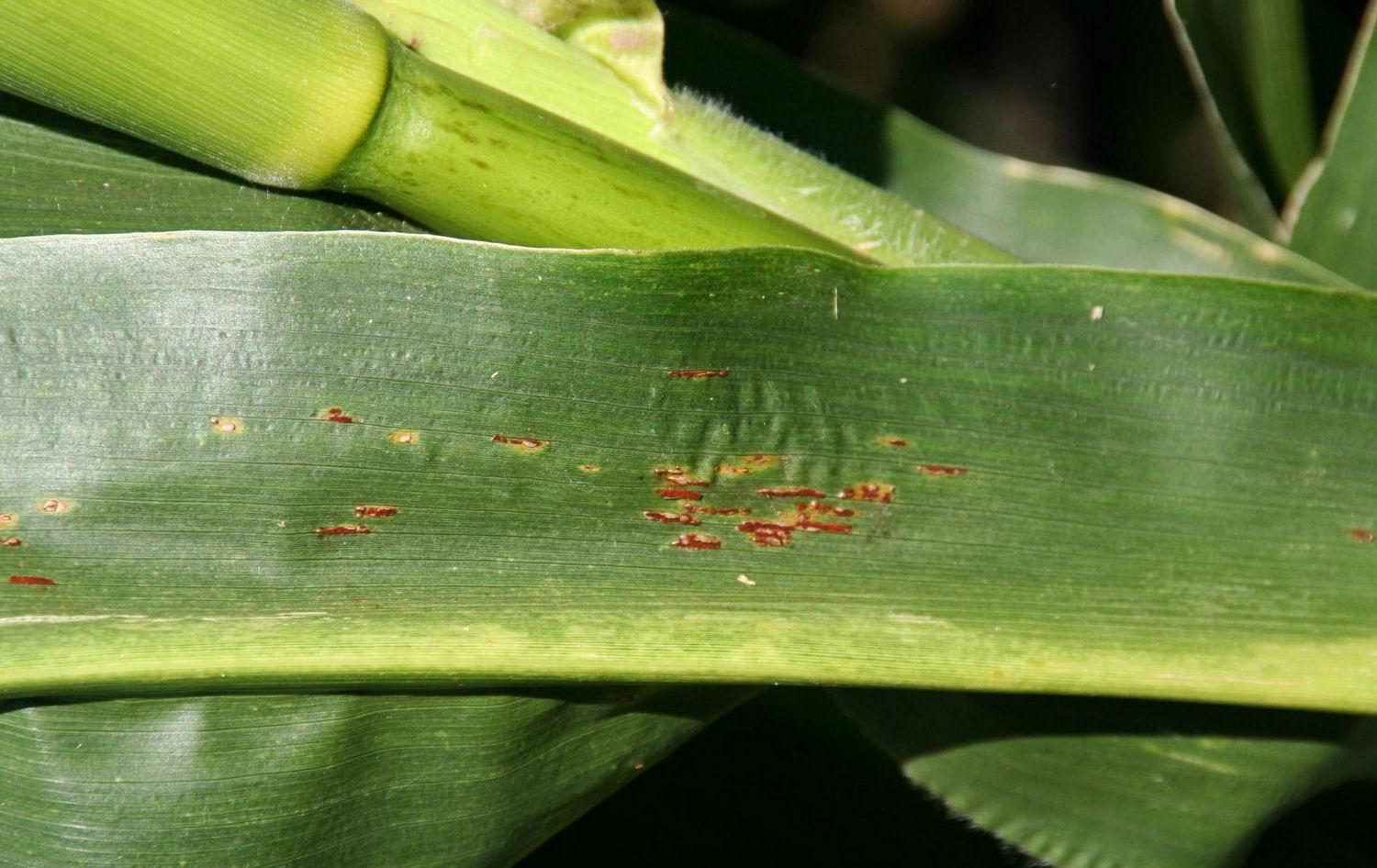
Common rust
Puccinia sorghi
What is Common rust (Puccinia sorghi)?
Common rust, caused by the fungus Puccinia sorghi, is a widespread and economically significant disease of corn crops. It affects corn plants at all growth stages, forming reddish-brown to orange pustules on leaves, husks, and stalks. These pustules contain spores easily dispersed by wind, rain, or human activities. While rarely causing complete crop failure, common rust can significantly impact corn productivity if not managed. Common rust, previously a minor issue, has become more prevalent due to the widespread use of susceptible corn cultivars and staggered planting.
How does Common rust (Puccinia sorghi) occur?
P. sorghi reproduces through a complex process involving multiple stages and spore types. Common rust (Puccinia sorghi) reproduces through spores. It starts with basidiospores released from overwintering structures. The spores spread to other plants, causing infections. In favorable conditions, the cycle repeats quickly. Later, sexual reproduction occurs, producing spores for the next year. Asexual spores play a vital role in disease spread. Managing common rust involves interrupting this cycle to control its impact.
Symptoms
1 - Impact on Maize Crop
P. sorghi, a fungal pathogen, inflicts damage on maize crops. It forms pustules on leaves and stems, impairing photosynthesis and nutrient uptake. This leads to reduced growth, stunted plants, decreased yield, and potential crop loss. Grain quality and nutritional value may also be negatively affected.
2 - Impacts on Soil Health and the Environment
• P. sorghi indirectly impacts soil through the decomposition of infected plants. • Accelerated decomposition of plant residues returns nutrients to the soil. It can influence soil organic matter levels and nutrient cycling dynamics. • Rust epidemics can impact food availability and agricultural sustainability.
Solutions
1 - Cultural Control
• Choose maize varieties that have demonstrated resistance to P. sorghi. • Begin monitoring for rust pustules starting at the whorl stage of maize plants. Apply fungicides when 80% of the observed leaves have one or more pustules. • Prevent the potential spread of rust disease by avoiding planting maize fields near those with varying maturity stages. • Choose fields with adequate air movement and ventilation, as poor air circulation can create favorable conditions for rust development. • Consult local agricultural experts for appropriate fungicides and pest control options for P. sorghi.
